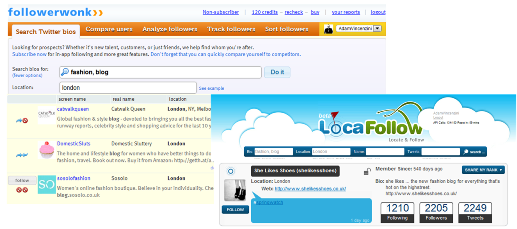
Identifying relevant online influencers has become a huge part of modern-day corporate and consumer communications. It is also subject to a HELLUVA lot of debate.
Instead of focusing on the subjectivity of this process (and how this insight is deployed), we’re going to take a look at how you can use a combination free tools to narrow your search.
The reason for focusing on free tools as opposed to the paid enterprise options is simple – using free tools puts more of an emphasis on manual discovery, forcing you to get under the skin of each result as opposed to simply relying on the score served up by a fancy algorithm.
(Let’s not completely discount the usefulness of rankings and scores. They’re never definitive but they can all aid in helping you make informed decisions as part of this overall process.) OK. Enough ass covering (for now!), let’s try and outline a useful guide to identifying the influencers brands and organisations so desperately crave.
Where do online influencers operate?
They are active, everywhere. The most popular places are blogs, Twitter, Facebook and YouTube. They also operate in niche online communities, smaller social networks and discussion boards like reddit and 4chan.
The three step identification and activation process
- Cross platform search by keyword (phrases)
- Initial list creation, based on established criteria (profiles)
- Production of rankings and recommendations based on relevance and ‘influence’

I’ve called this ‘id3’ (influence identification in three steps).
Step one – the identification process
As mentioned earlier, influencers are present and active in a lot of places. For the sake of brevity, we’re going to make a couple of assumptions:
- Influencers are active on Twitter
- Influencers operate some form of blogging hub
This isn’t always true, but in most cases Twitter is used as an amplification channel for the original content created by these online participants. With this in mind, the process we’re going to use focuses on the intelligence we can glean from Twitter initially, and then we will verify this initial sweep with blog (or relevant hub) data.
The initial steps involve:
- Search by keyword
- Search by location
There are three tools that are useful in this process: FollowerWonk.com, LocaFollow.com and Twingualte.com — the first two can also search by location, which make them the most efficient options.
You are relying on people having filled out their Twitter biographies with some accuracy here. You are also hoping that your influencers have correctly identified their location details properly too. Let’s pretend you are searching for fashion influencers in London using LocaFollow and FollowerWonk.
This is what you’ll get:

The first part of the identification process is now complete. FollowerWonk gives you an ‘influence’ rating which must be taken with a pinch of salt.
In order to give that rating a bit more relevance, run that user through another influencer rating tool like TweetLevel. We still can’t say with complete confidence that we have the most relevant influencers in our sights. This is where the manual element of the process is important by taking an in-depth look at that person’s blog / hub.
Things to consider include frequency of posts, number of comments per posts, and number of retweets per post. If you want to aid this process, run the blog through BlogLevel. This will give you an influence score for the blog as well as some specific attribute metrics.
You then end up with something like this:

You can then rank your results in a high, medium and low order. Depending on the nature of your activity, you can then determine who the most appropriate person is to collaborate with.
Where do you go from here?
I can’t stress the ‘pinch of salt-ness’ of this process enough.
No matter how hard we try, a 100% fool proof influence rating is near on impossible because influence is not a science, it can’t be But, this can help narrow things down, significantly.
There are some great paid for tools which can also help – things like GroupHigh.com can automate the process you’ve just been walked through and save you time to and are definitely worth consideration.
Get the TNW newsletter
Get the most important tech news in your inbox each week.